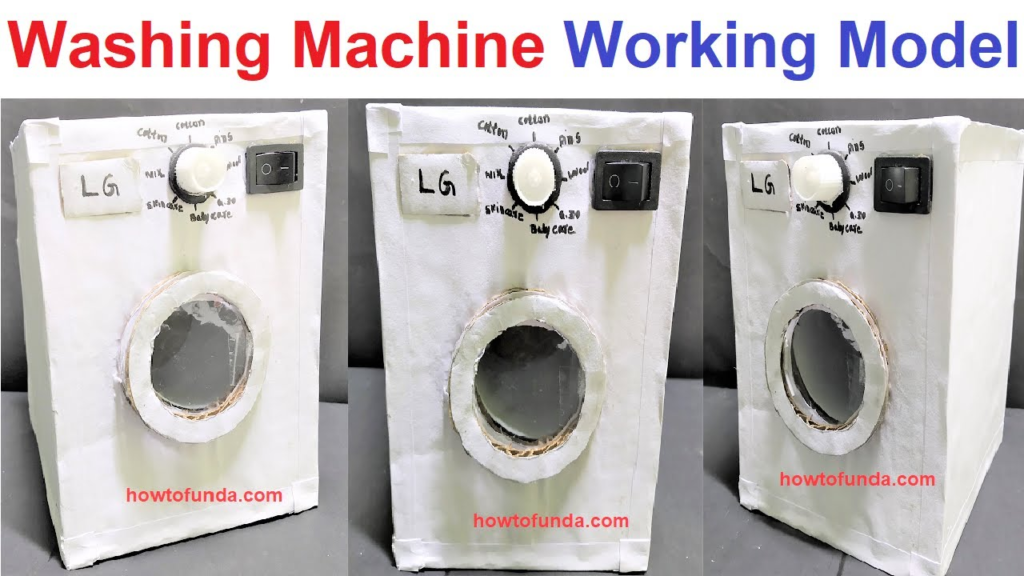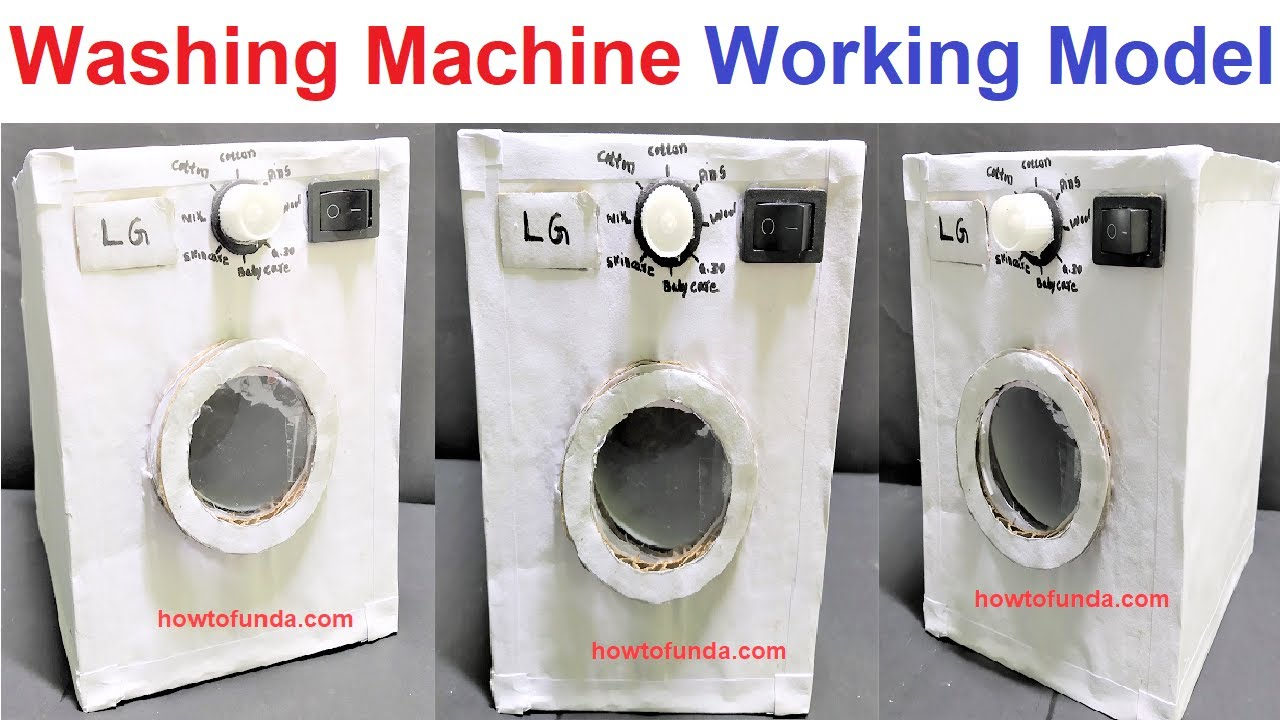A washing machine working model demonstrates the basic principles behind the operation of a washing machine, which uses mechanical motion and water to clean clothes. This model simulates the washing, rinsing, and spinning processes that take place inside a real washing machine.

Key Components of the Model:
- Container/Tub: A small tub or container represents the drum of the washing machine, where clothes are placed for washing.
- Motor: A small electric motor provides the mechanical energy needed to rotate the drum or agitator, mimicking the spinning and agitation action in real washing machines.
- Water Source: A water inlet (such as a syringe or tube) represents the flow of water into the washing machine for washing and rinsing clothes.
- Pulleys and Belts: Pulleys and belts are used to transfer power from the motor to the drum, simulating the motion in a real washing machine.
- Wires and Switch: Wires and a switch are used to control the motor, simulating the on-off mechanism of a washing machine.
How It Works(Washing machine working model):
- Filling the Tub with Water: The model starts by filling the tub with water, representing the washing process. Water is either manually added or pumped using a syringe to simulate the water entering the washing machine.
- Agitation: Once the water is in the tub, the motor is turned on. The motor drives a belt or pulley system, causing the drum or agitator to rotate. This motion mimics the action of the washing machine’s agitator, which stirs the clothes and soap to clean them.
- Rinsing: After the washing cycle, the dirty water is drained, and fresh water is added again for rinsing. This helps to remove any soap residue.
- Spinning: The motor speeds up, causing the tub to rotate quickly. This simulates the spinning cycle of a washing machine, where clothes are spun to remove excess water, allowing them to dry faster.
Applications and Learning:
- Real-Life Insight: This model demonstrates the essential steps of washing clothes in a machine, including washing, rinsing, and spinning.
- Educational Value: It helps explain basic mechanical engineering principles such as motion, water flow, and energy transfer, as well as how machines work to perform repetitive tasks efficiently.
This washing machine model is ideal for educational purposes, showcasing the interaction of mechanical parts and water to clean clothes effectively.

